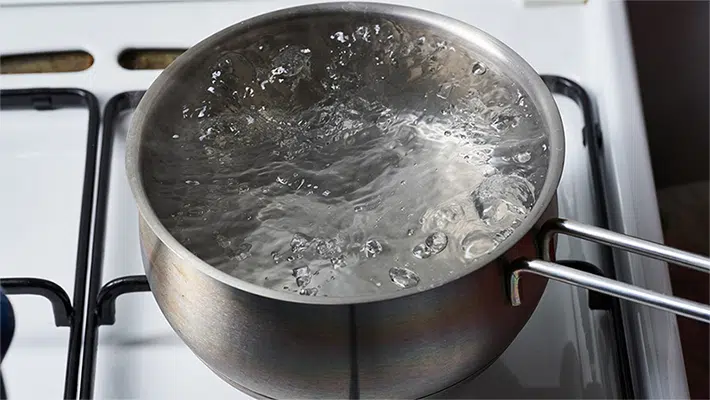
September 9, 2024
Discover everyday examples of convection and understand how this process impacts our daily lives.
Convection heat transfer is one of the key concepts in thermodynamics, and it plays a crucial role in many of our day-to-day processes. Convection heat transfer appears in many forms in our everyday world: from boiling water to the heat exchangers in heating systems. This phenomenon gives one more way to comprehend basic physics and get insight into many household devices and natural processes . This blog explores various convection heat transfer examples, underlying ideas, and its importance in everyday life.
Convection is the transmission of thermal energy from a fluid motion (it can be a liquid or gas). It is different from conduction heat transfer (which involves direct contact between particles in a system) and radiative heat transfer (which involves the transfer of heat through the emission of electromagnetic waves) . In convection, the movement of fluid particles carries energy from one place to another, resulting in the transfer of heat.
There are two types of convection: natural convection and forced convection. Natural convection is the way fluid moves due to natural means such as the buoyancy effect, where the temperature differences in the fluid cause a circulatory flow pattern from the rise of warmer fluid and the fall of cooler fluid. On the other hand, forced convection moves fluid by an external force, for example, a fan or pump to augment heat transfer.
Thus, understanding these types helps us understand how convection heat transfer operates in different scenarios.
1. Water boiling: It is one of the most common examples of natural convection. Water boils when the water molecules near the bottom of the pot heat up, causing them to lose their density and move upwards. The colder molecules are dense which is why they move down, creating a circular flow. This constant circulation creates a convection current, transferring heat through the pot and into the water until it boils.

Figure 1: Boiling of water is one of the most common examples of convection
2. Circulation of air inside in room: Have you ever thought of how the whole room gets warm with a heater present? It is another example of natural convection. The heater warms the air in its proximity making it less dense, and is then displaced upwards by cooler, denser air. This creates a convectional current that allows the whole room to get warmer over time.

Figure 2: Heaters warm up rooms through natural convection
Many other natural phenomena such as sea breezes, hot air balloon, ice melting, and movement of tectonic plates also involve the process of convection heat transfer.
1. Use of fans to cool down the room: A fan circulates the air by forcing it across cooler surfaces which helps to reduce the heat from warmer objects, decreasing the temperature of the room.

Figure 3: Fans help to cool down a room by circulating the air
2. Convection ovens: These ovens have fans that help circulate hot air around food to ensure it is evenly heated from each side. This is a perfect example of using the theory of convection heat transfer to cook food.

Figure 4: Convection ovens have fans that circulate the air ensuring equal distribution of heat.
3. Car radiators: Liquid coolant is pumped through an engine and absorbs heat, then it passes through a radiator, where a fan helps dissipate the heat into the surrounding air. This prevents the engine from overheating, keeping it at the best operational temperatures.

Figure 5: Car radiators pump coolant through the engine reducing heat generation
Some other examples of forced convection are hairdryers and HVAC systems. In hair dryers, there is an element present that heats the air and a fan that blows the hot air onto your head, drying your hair. Similarly, HVAC systems use blowers to transport air over cool or hot coils, forcing the cool or hot air into buildings.
The process of convection heat transfer is one of the most fundamental processes with extremely large effects on our daily life. From the simple process of boiling water to the complex operation of HVAC systems, convection is there to assist in the efficient conduction of heat. With this knowledge, not only do we have a better understanding of thermodynamics, but we can also appreciate more how complicated the world around us is through its workings. Convection heat transfer serves as a reminder of the wondrous principles that govern our environment.
If you’re curious about how convection compares to other forms of heat transfer, be sure to check out the basics of heat transfer for an overview of conduction, convection, and radiation.
Convection can be defined as the process of heat transfer through the movement of fluid due to differences in temperatures within the fluid.
Boiling of water is the most common example of natural convection, where heat causes the water molecules to get warm and less dense thus moving upwards, while the cooler molecules and denser molecules sink, creating a circular flow.
Conduction is the transfer of thermal energy between solids which happens due to direct contact between the molecules. On the other hand, convection is the transfer of thermal energy in liquid or gas due to the movement of molecules.
Convection heat transfer occurs when there is a temperature difference in the fluid itself, making the warmer fluid move up and the denser and cooler fluid move down.
In convection, heat is transferred via a circulation pattern created by the warmer fluid becoming less dense and moving up while the cooler and denser fluid sinks to the bottom, creating a movement in fluids.
Convective heat transfer. (2003). Retrieved from The Engineering Toolbox: https://www.engineeringtoolbox.com/convective-heat-transfer-d_430.html
Forced convection heat transfer. (n.d.). Retrieved from sfu.ca: https://www.sfu.ca/~mbahrami/ENSC%20388/Notes/Forced%20Convection.pdf
J.P.Holman. (2010). Heat transfer. McGraw Hill.
Ting, D. (2022). Convection heat transfer. Retrieved from Science Direct: https://www.sciencedirect.com/topics/engineering/convection-heat-transfer